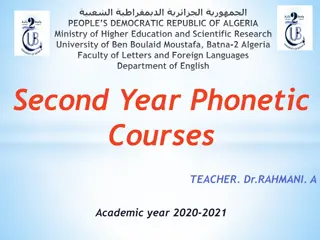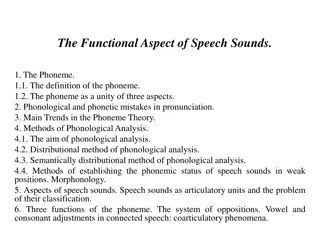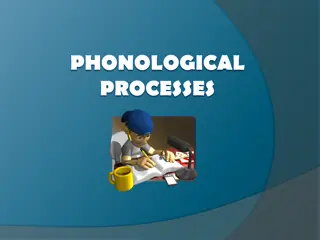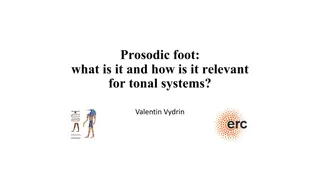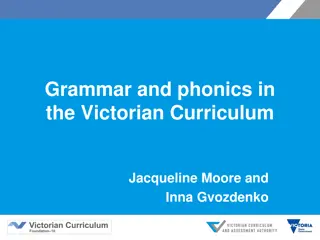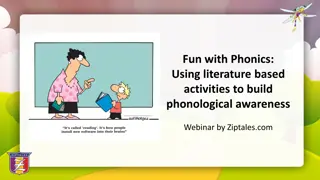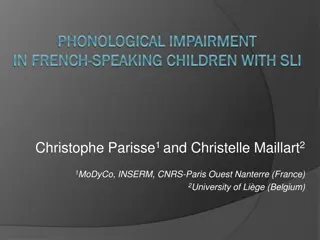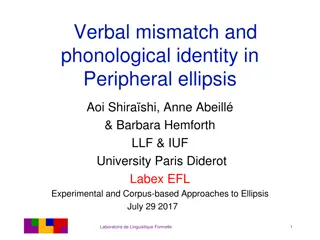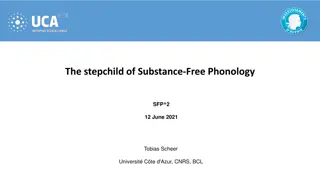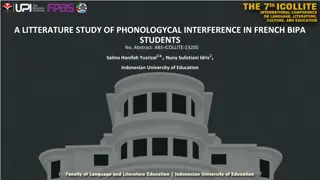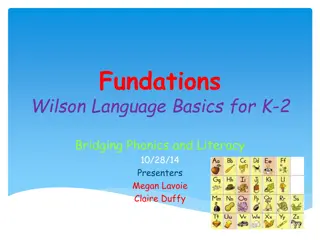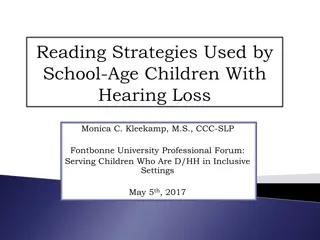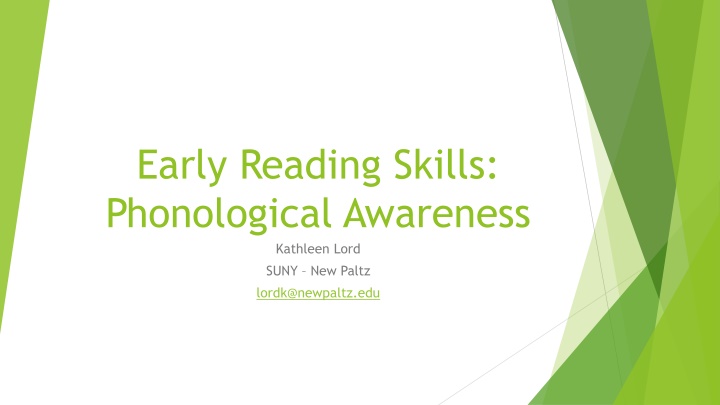
Enhancing Early Reading Skills: Phonological Awareness and Curriculum-Based Measurements
Explore the significance of phonological awareness in developing early reading skills, the objectives behind curriculum-based measurements, and the impact of reading proficiency on comprehension. Discover key assessments and strategies to support phonemic awareness and word recognition, ultimately promoting fluency and language comprehension.
Download Presentation

Please find below an Image/Link to download the presentation.
The content on the website is provided AS IS for your information and personal use only. It may not be sold, licensed, or shared on other websites without obtaining consent from the author. If you encounter any issues during the download, it is possible that the publisher has removed the file from their server.
You are allowed to download the files provided on this website for personal or commercial use, subject to the condition that they are used lawfully. All files are the property of their respective owners.
The content on the website is provided AS IS for your information and personal use only. It may not be sold, licensed, or shared on other websites without obtaining consent from the author.
E N D
Presentation Transcript
Early Reading Skills: Phonological Awareness Kathleen Lord SUNY New Paltz lordk@newpaltz.edu
Objectives Review terminology Understand common challenges View an instructional video Preview instructional resources
Skilled Reading Word recognition Phonological awareness Decoding/Encoding Sight Word/High Frequency Words Fluency Language comprehension Background knowledge Vocabulary Genre Structure Strategic reading
Purpose of Curriculum Based Measurements Identifies and monitors students who might be at- risk Quick and easy one-minute assessments Early reading skills Word recognition Fluency
Curriculum Based Measurements Assess: Phonological Skills Phoneme Segmentation Alphabetic Principle/Phonics Letter Names Letter Sounds Word Reading Fluency Passage Reading
Impact of Early Reading Skills on Comprehension Comprehension is the goal what gets in the way? Profile 1: Word reading skills not at grade level Profile 2: Word reading skills strong, but fluency not at grade level
Phonemic Awareness: Segmentation (Grades K and 1) What is it? Ability to hear and separate individual sounds in spoken words Why is it important? Spelling (and reading)
Review the Article Target the Problem: Phonological and Phonemic Awareness Phonological Awareness includes rhyming, onset/rime, alliteration, etc. Phonemic Awareness is part of phonological awareness Big ideas: Children must hear the sounds Supports spelling Individual sounds (phonemes) are then attached to letters Supports reading words
WHY? Phonological Awareness Sounds not letters! Helps students understand how spoken language is represented in print Differences between phonemes may be very subtle Phonemes can get stuck together (e.g. blends) Add letters to instruction as soon as possible
Common Challenges Spelling captures phonemic awareness Consonant blends Jrem or jem (dream) Short vowels fn (for FAN) pd (for PET) Voicing confusion between similar sounds b/p; g/c; d/t
Considerations for ELLs Review ELLs article for more information: English Language Learners and the Five Essential Components of Reading Instruction PART 1: Phonemic Awareness The sound may not be represented in native language Phonemes conflict with native language (ch and sh are the same in Spanish)
Elkonin Boxes: (Sound Boxes) How to use Elkonin Boxes 1. Pronounce a target word slowly, stretching it out by sound. Ask the child to repeat the word. 2. Draw "boxes" or squares on a piece of paper, chalkboard, or dry erase board with one box for each syllable or phoneme. 3. Have the child count the number of phonemes in the word, not necessarily the number of letters. For example, wish has three phonemes and will use three boxes. /w/, /i/, /sh/ 4. Direct the child to slide one colored circle, unifix cube, or corresponding letter in each cell of the Elkonin box drawing as he/she repeats the word. 5. The example (next slide) shows an Elkonin Box for the word "sheep," which consists of three phonemes (sounds): /sh/ /ee/ /p/
Instruction: Elkonin Boxes https://www.youtube.com/watch?v=CIhurqhIk0c
Example Link to movie clip https://vimeo.com/201301034/169dbcc034
Resources http://fcrr.org/resources/resources_sca_k-1.html ARTICLE additional information http://www.readingrockets.org/article/how-now-brown-cow-phoneme- awareness-activities


